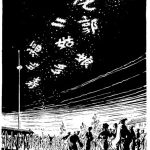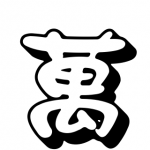Articles in the ‘Reading’ category Page 11
-
Chinese reading challenge: Read more or die
You don’t read as much in Chinese as you should and January is the month that will change. The challenge starts on January 1st and the goal of reading as much as possible in Chinese in one month. This article contains not only more information about the challenge, but also lots of tips and tricks for reading (more) in Chinese!
Read → -
Learning to read aloud in Chinese
Reading aloud in Chinese is hard, but it’s not impossible. It requires a lot of different skills, but it also seems like reading aloud is a skill in itself that needs to be practised specifically if we want to improve our reading ability. In this article, I discuss an experiment I did to see if I could increase my own ability to read aloud in Chinese.
Read → -
Reading aloud in Chinese is really hard
Reading unfamiliar Chinese text aloud is very hard. This article sheds some light on why this is the case and what consequences it has for people who learn Chinese as a second language. In general, as a student, don’t feel down if you can’t read aloud well, because it really is very hard, and as a (native speaking) teacher, please understand that reading aloud in Chinese is much harder than you think.
Read → -
Phonetic components, part 2: Hacking Chinese characters
This is the second and final article about using phonetic components to hack Chinese characters and make it considerably easier to handle similarly looking characters. This article describes both the principles and gives plenty of examples that might resolve some of your current problems for you.
Read → -
The Cthulhu bubble and studying Chinese
What does learning Chinese have to do with the Cthulhu Mythos? Quite a lot, actually. This article is about your bubble of safety and what happens when monsters (weird, difficult cases) appear and what you should do to avoid insanity. In short, don’t poke the monster in the eye; when encountering strange cases, either ignore them or memorise them, don’t waste time understanding everything you hear or see.
Read → -
Measuring your language learning is a double-edged sword
Spaced repetition software offers a great way of measuring progress, every step forward is recorded and clearly visible. However, this is also a trap, because even though SRS is useful, it’s just a tool, not a comprehensive strategy. Measurable progress is a great help, but only if you use it correctly.
Read → -
31 Twitter feeds to help you learn Chinese
Twitter is an excellent source for learning Chinese. In this article, I list my favourite Twitter feeds in three categories: learning how to learn Chinese, learning how to learn languages in general and finally Chinese input on Twitter. Something missing in the article? Let me know!
Read → -
A language learner’s guide to reading comics in Chinese
This article is a guide to reading comics in Chinese, suitable for beginners as well as those who already have some experience. Reading comics is an excellent way of attacking the Great Wall of Chinese (the daunting effect of seeing a whole page of text and not knowing what to do). It’s also fun, which is arguably the most important thing.
Read → -
Approaches to reading in Chinese
Reading is one of the best ways of picking up new vocabulary once we reached an intermediate or advanced level, but it’s also necessary to read a lot to be able to write Chinese properly. Reading also enables us to understand word usage and brings us closer to the culture behind the language. This article is focused on reading in Chinese, including reading method, book selection, benchmarking, vocabulary and more.
Read → -
The 10,000 hour rule – Blood, sweat and tears
The 10,000 hour rule is quite simple. It states that it takes roughly 10,000 hours of practice to become really good at something. The most important lesson here is that talent is far less important that people think. Even towering geniuses work very hard. Blood, sweat and tears are what counts in the end, not talent.
Read →








